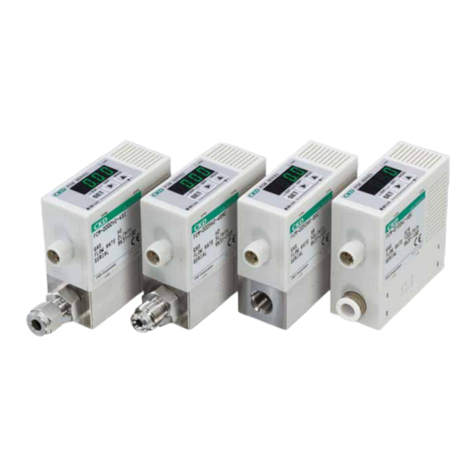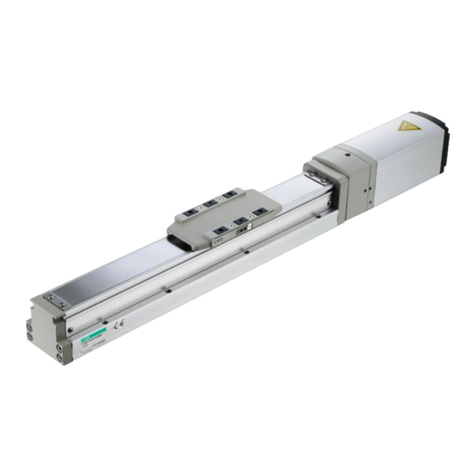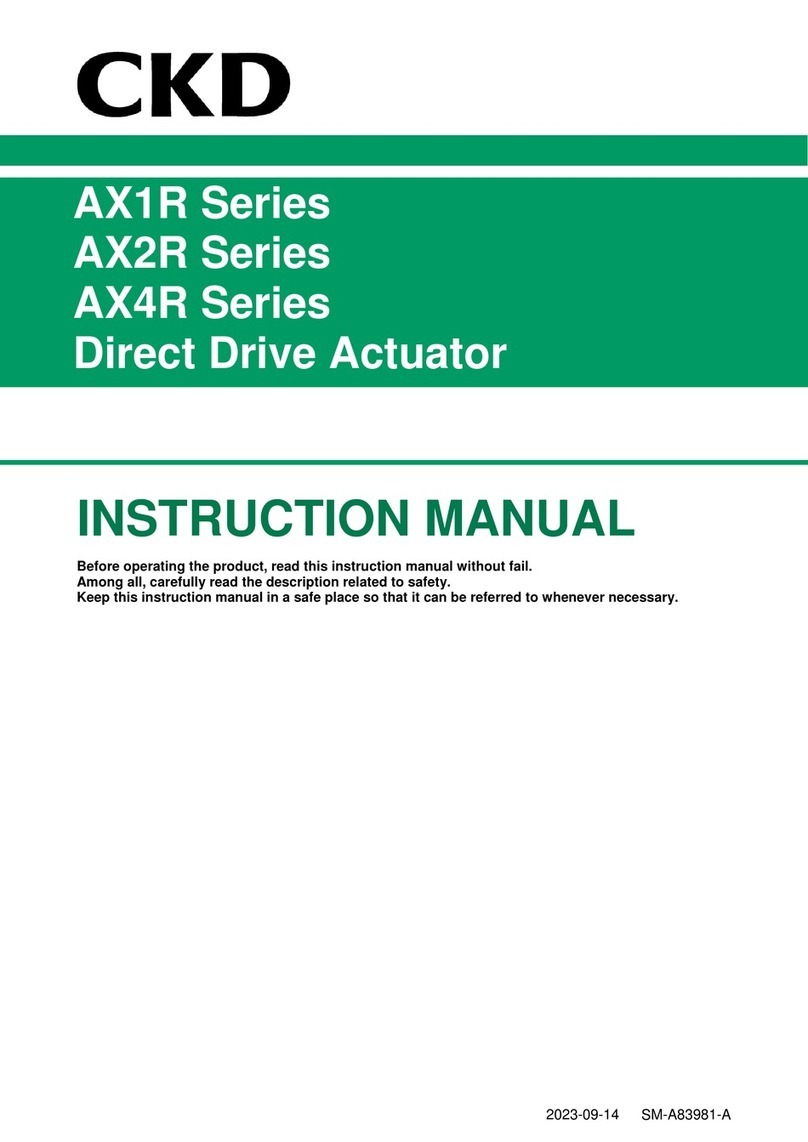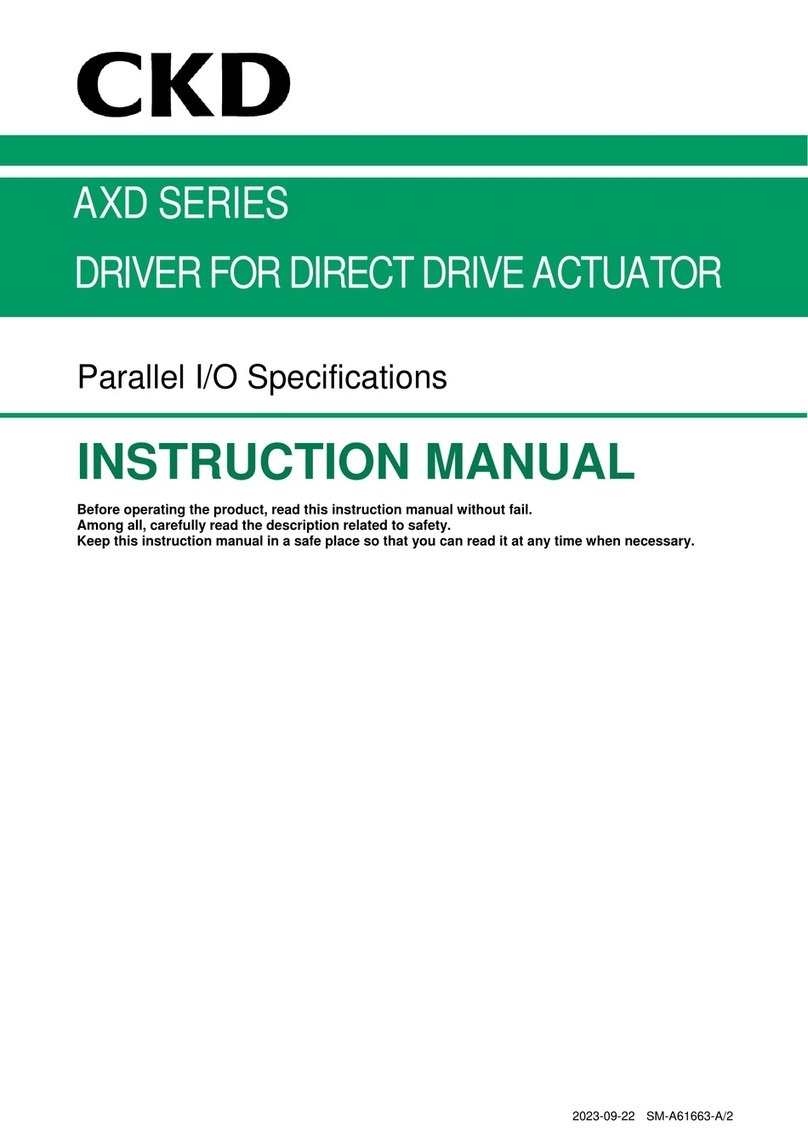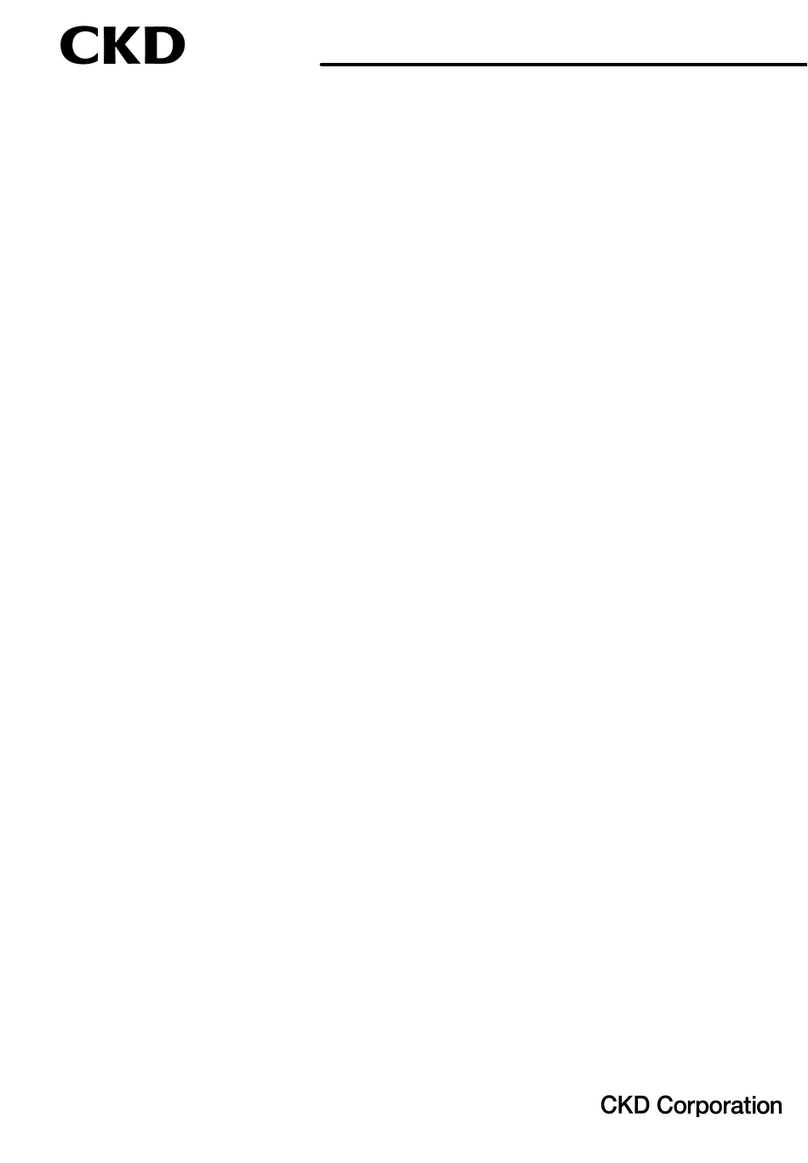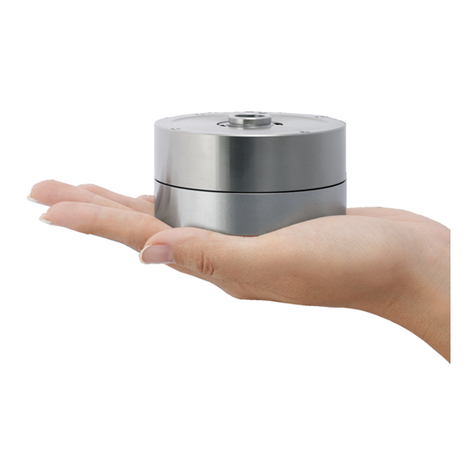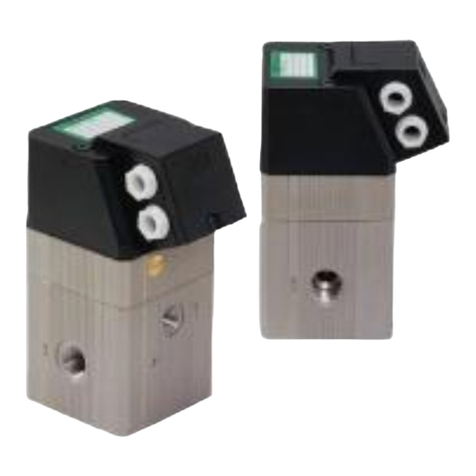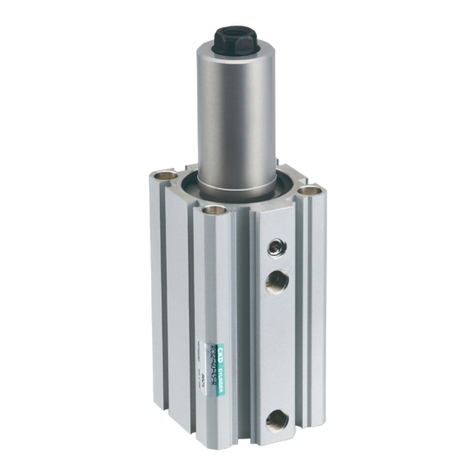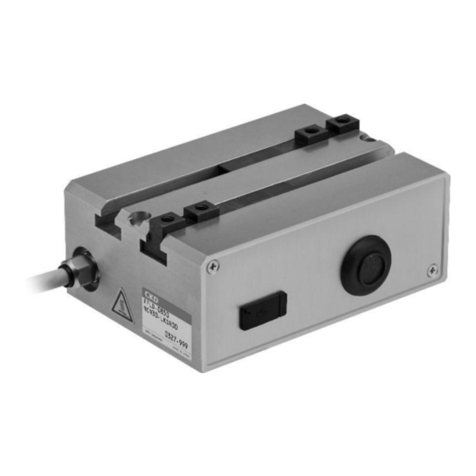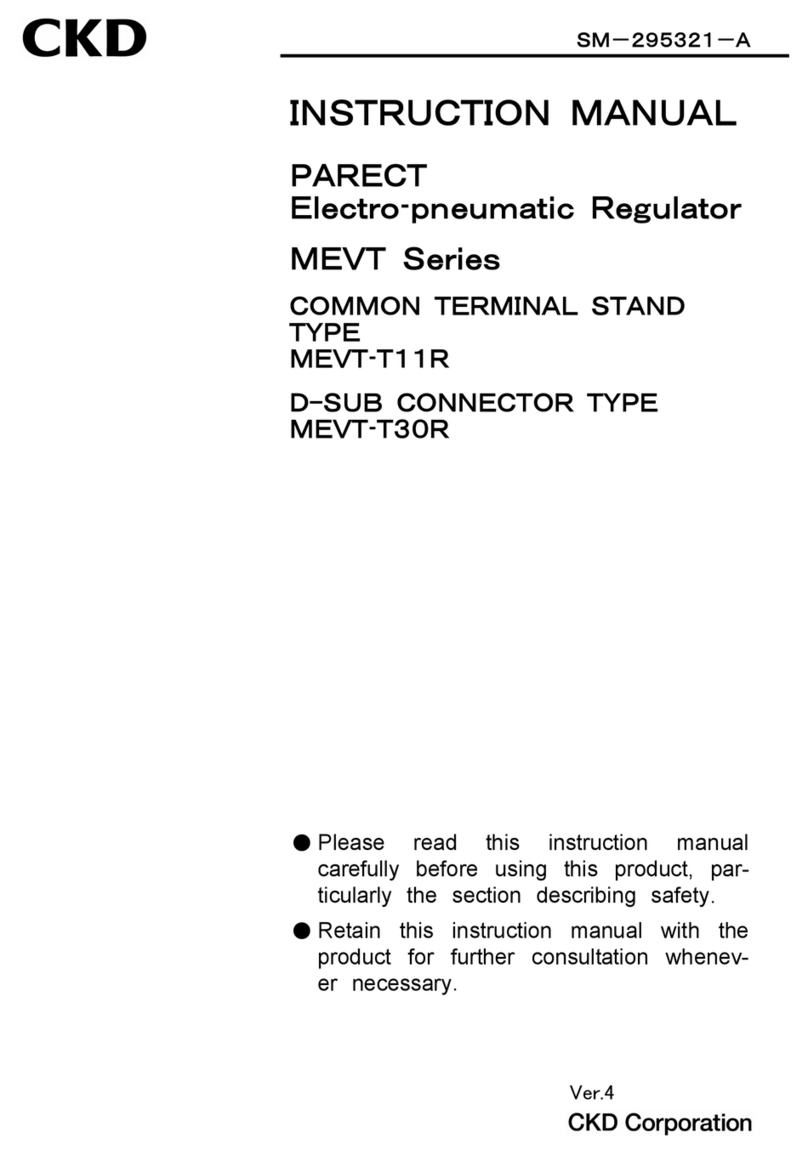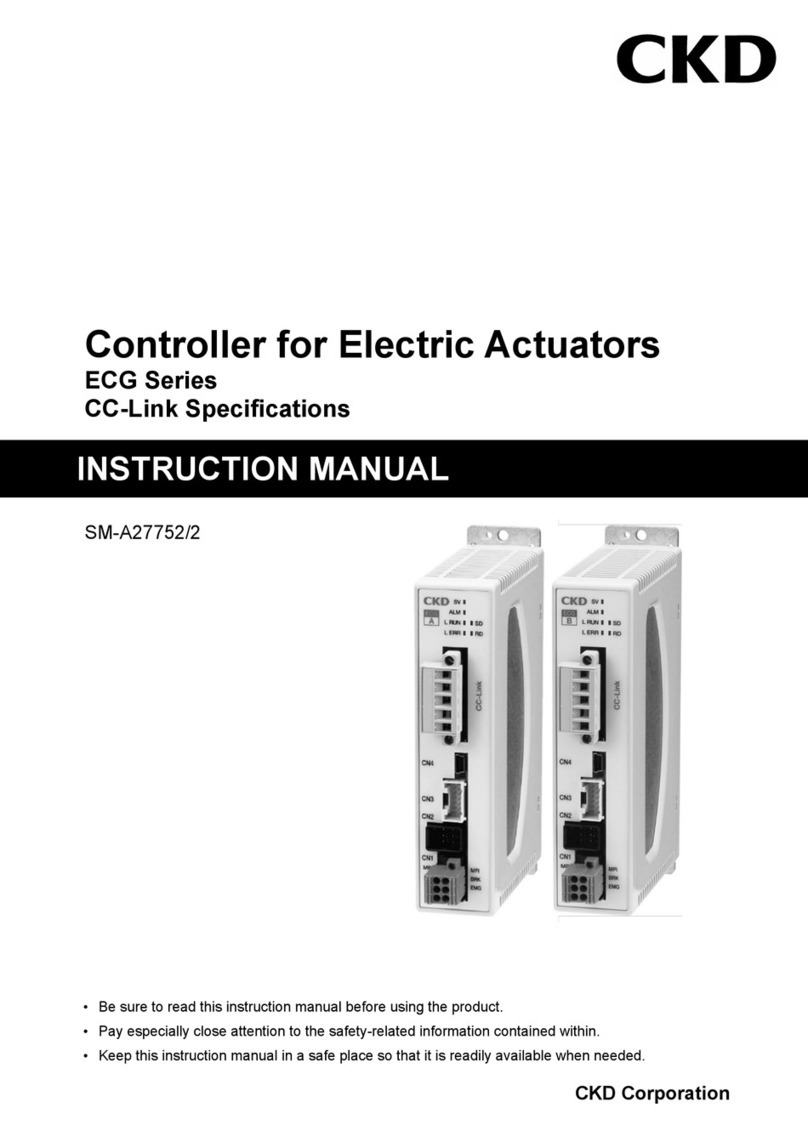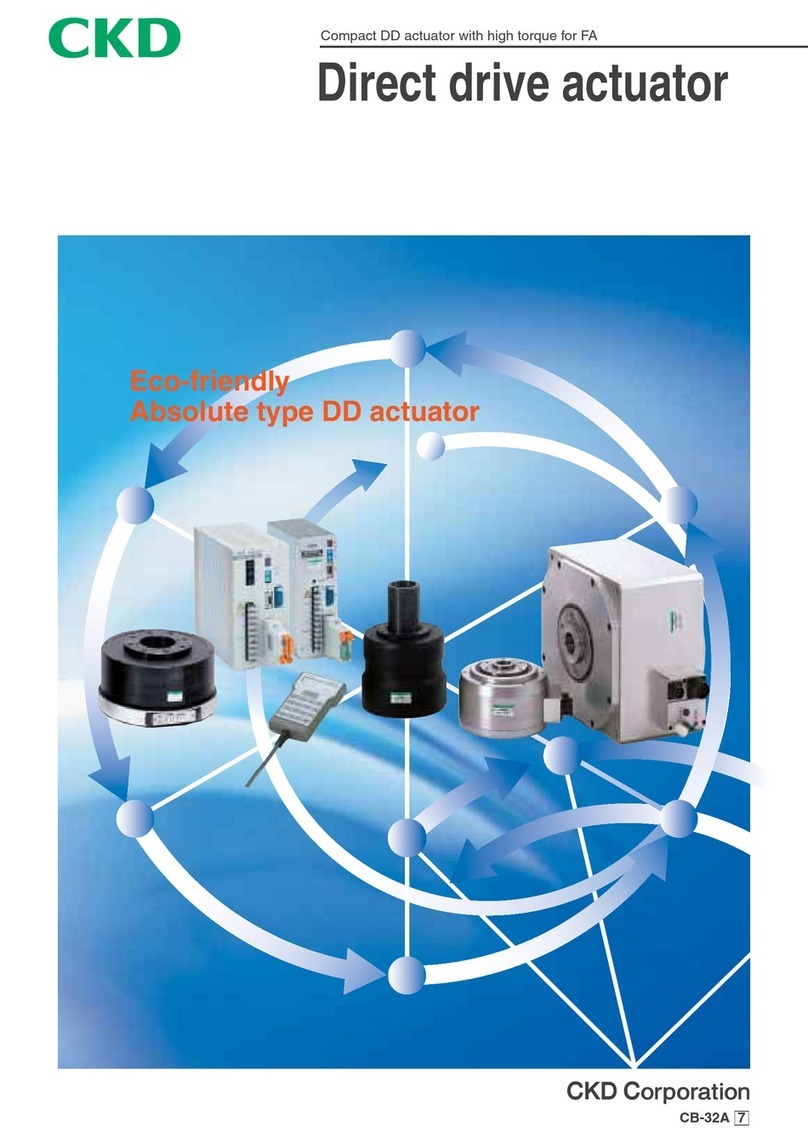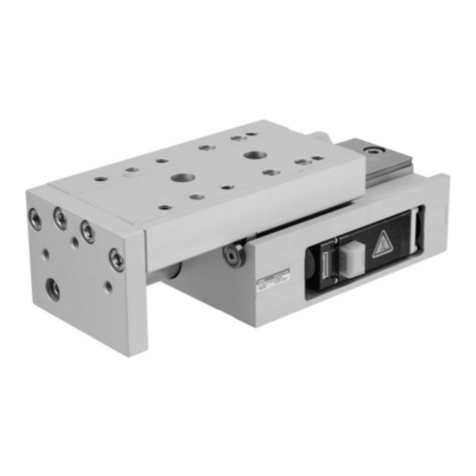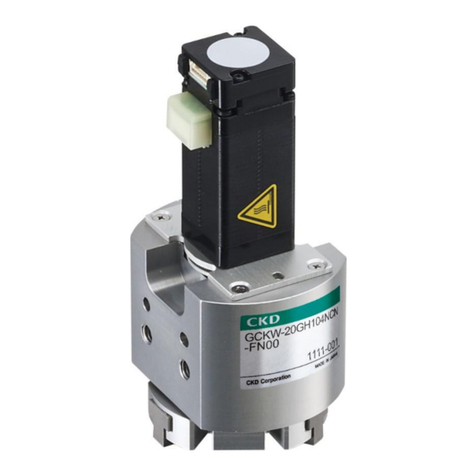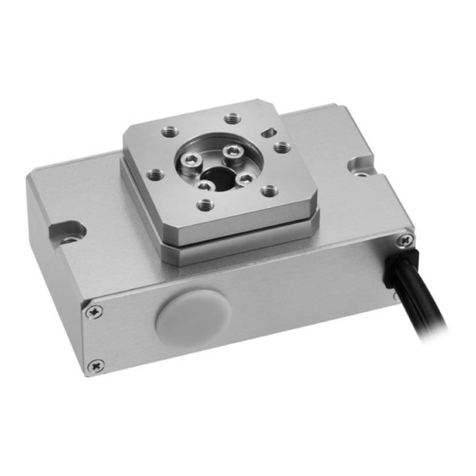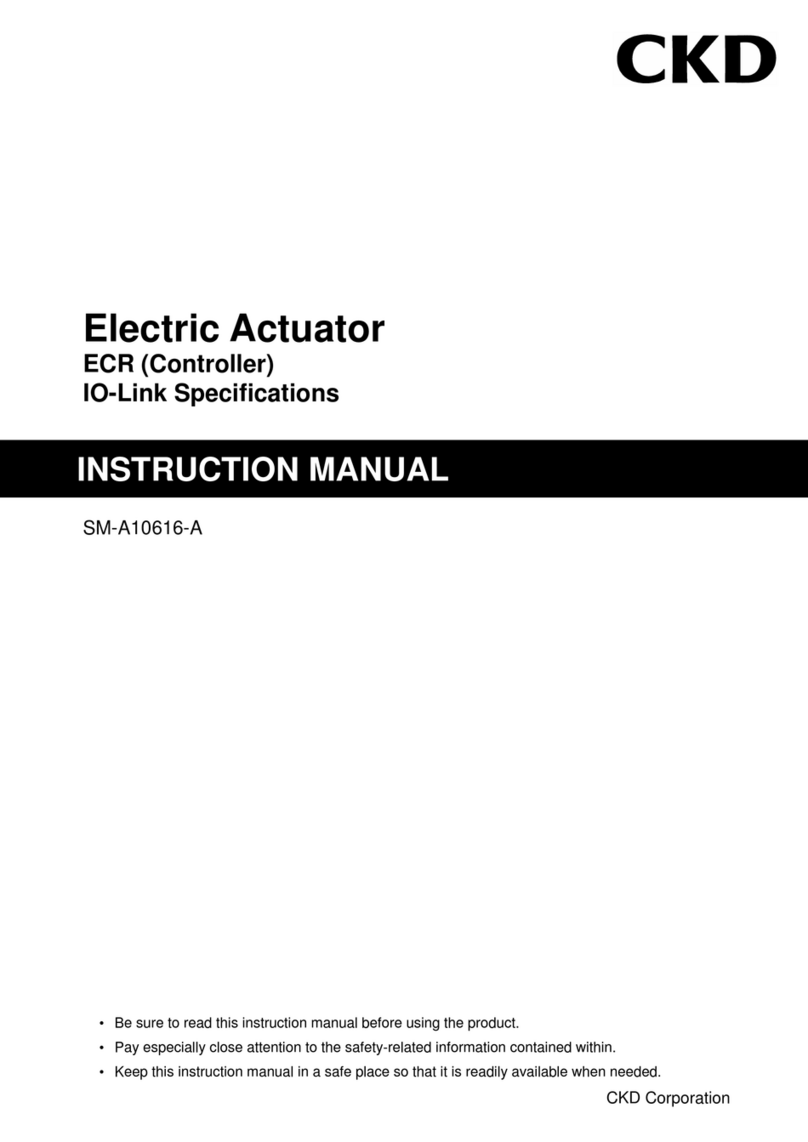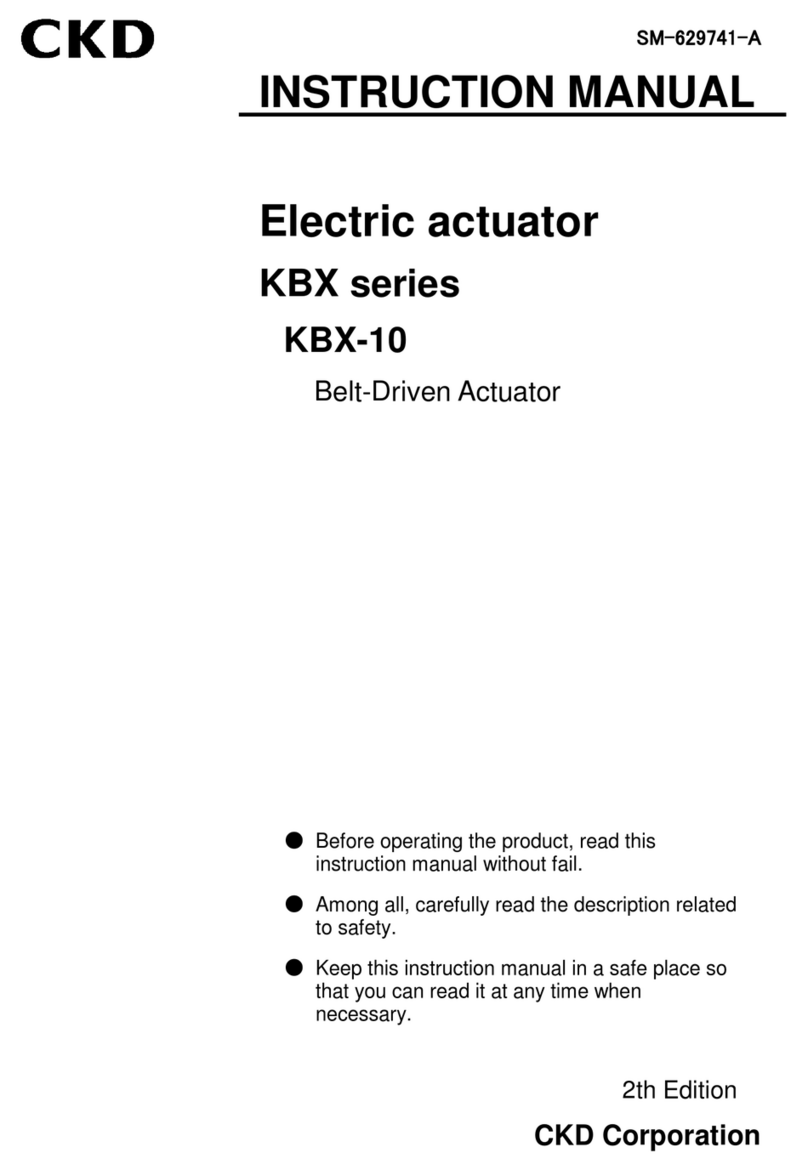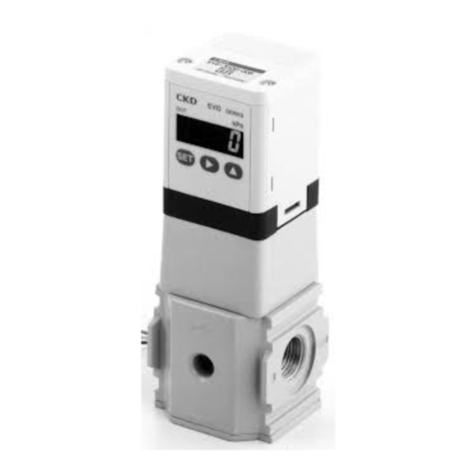
393
Perform a periodic inspection once every six months
or less to check for any cracks, scratches, and other
damage to the plastic bowl and transparent housing.
If cracks, scratches or other deterioration are found,
they may cause damage. Please replace the bowl or
the product with a new one.
Check the plastic bowl periodically for contamination.
If parts are heavily contaminated or if transparency has
decreased, replace with a new bowl.
Use a diluted neutral household detergent to wash parts,
and then rinse well with clean water. Use of other agents
could result in breakage.
Removing the bowl
Stop the working uid supply. Release the pressure
in the bowls completely and make sure that there is
no residual pressure before removing the bowls.
Remove air lter drain.
Components could malfunction if moisture flows
into the secondary side.
Do not disinfect or clean using alcohol. It may
deteriorate or damage the plastic part.
Read instructions and precautions attached with the
product before use or maintenance. Wash your hands
before attaching new elements.
Anti-bacterial and bacteria removing effects lessen
when there are dirt or oil deposits in the lter element.
Periodically implement inspections and
replacements. Contact CKD for maintenance details.
Do not modify the product.
Use/maintenance
WARNING
CAUTION
Drainage starts when the cock is turned in
the O direction, and the discharge stops
when the cock is turned in the S direction.
Tighten by hand in the S direction.
This lter cannot be ushed with air, water, etc., and reused.
When 1 year (6,000 hours) has passed or the pressure
drops to 0.1MPa, replace the element with a new one.
We ask that customers perform element replacement maintenance by themselves.
During element replacement, take consideration that
bacteria, foreign materials, or foreign matter deposits in
the primary side do not ow into the secondary side.
While operating, do to apply vibration, impact, or other external force from tube.
(Press down
and turn.)
Consult CKD when using in environments lled with the following chemicals.
Check whether the testing solutions, sealants and adhesives contain the following chemicals.
Chemical resistance of plastic bowl and clear housing
Types of chemicals
Categories of chemicals
Main products of chemicals General applications
Nylon
Inorganic
chemicals
Acids Sodium hypochlorite, hydrochloric acid, sulfuric acid,
hydrouoric acid, phosphoric acid, chromic acid, etc.
Sterilization, acid washing of metals, acidic degreasing
solutions, coating treatment solutions, etc. x
Alkalines
Alkali substances such as caustic soda, caustic potash,
calcium hydroxide, aqueous ammonia, and sodium carbonate
Alkaline degreasing solution for metals
Soluble cutting oil, leakage detection agent
Inorganic salts
Sodium sulde, sodium nitrate, potassium bichromate, sulfate of soda, etc.
Organic
chemicals
Aromatic
Hydrocarbons Benzene, toluene, xylene, ethyl benzene, styrene, etc. Contained in paint thinner (benzene, toluene, and xylene) x
Chlorinated
aliphatic
hydrocarbons
Methyl chloride, ethylene chloride, methylene chloride,
acetylene chloride, chloroform, trichlene, perchlene,
carbon tetrachloride
Organic solvent-based washing solution for metals (trichlene,
perchlene, carbon tetrachloride, etc.)
Chlorinated aromatic
hydrocarbons
Chlorobenzene, dichlorobenzene, benzene hexachloride (B/H/
C), etc.
Agricultural chemicals
Petroleum components
Solvent naphtha, gasoline, kerosene
Alcohols Methyl alcohol, ethyl alcohol, cyclohexanol, benzyl alcohol Used as antifreezing agent
Leakage detection agent x
Phenol Carbolic acid, cresol, naphthol, etc. Disinfectant solution x
Ethers Methyl ether, methyl ethyl ether, ethyl ether Additive of brake oil
Ketones
Acetone, methyl ethyl ketone, cyclohexanone, acetofeNN, etc.
x
Carboxylic
acids Formic acid, acetic acid, butyl acid, acrylic acid, oxalic acid,
phthalic acid, etc. Dyes/oxalic acid for aluminum processing, phthalic acid for
paint base and leakage detection agents x
Esters Dimethyl phthalate (DMP), diethyl phthalate (DEP), dibutyl
phthalate (DBP), dioctyl phthalate (DOP) Lubricant, synthetic oil, rust preventing agent additive plasticizer
for synthetic resin
Oxyacids Glycol acid, lactic acid, malic acid, citric acid, tartaric acid x
Nitro
Compounds
Nitromethane, nitroethane, nitroethylene, nitrobenzene, etc.
Amines
Methylamine, dimethylamine, ethylamine, aniline, acetanilide, etc.
Additive of brake oil x
Nitriles Acetonitrile, acrylonitrile, benzonitrile, acetoisonitrile, etc. Raw material for nitrile rubber
The chemical resistance of plastic parts is shown below.
Avoid using products in an atmosphere where chemicals are contained in working uid or atmosphere, or where they could adhere to parts.
Use in the above state could lead to bowl damage and accidents.
WARNING Chemical resistance of plastic
Anti-bacterial/bacteria-removing lter
Drainage method
Removing the resin bowl
Plastic bowl
Bowl guard
Latch
